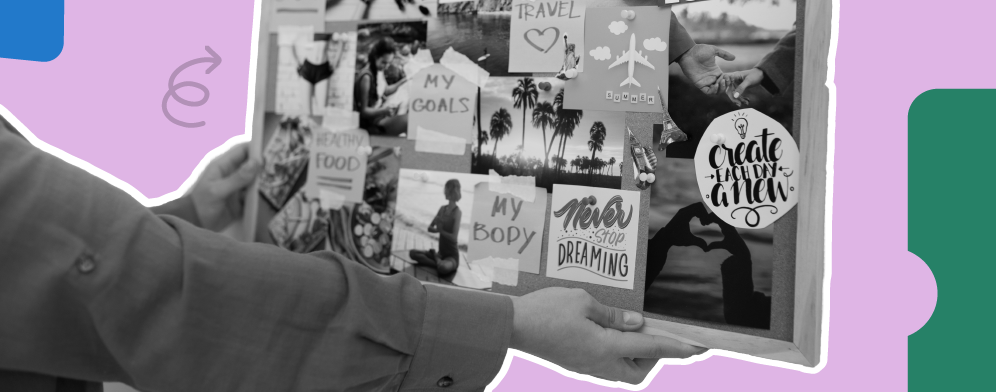Struggling to come up with networking event ideas for teams that exhibit panache as well as practicality? You’re not alone. Brainstorming fun ways to smooth out the social interactions in professional gatherings can be a challenge, especially in industries and professions where being a fluent conversationalist isn’t exactly part of the job description.
To help you out, we’ve come up with a concise list of 10 ways to facilitate discussions and idea sharing at networking occasions. All the concepts here are flexible enough to be adapted for different situations and a range of group sizes, making them applicable to almost any setting.
1. What Are Networking Events?
Business networking events are opportunities for working professionals to meet and chat with their peers. They are most often organized to enable people to make useful connections that can further their business objectives. At the same time, these social get-togethers can also be a useful forum for exchanging views on issues that are affecting an industry.
2. 10 Networking Event Ideas for Meaningful Connections
2.1. Charades with Industry Buzzwords

Charades is arguably one of the most fun networking event ideas you’ll come across. The classic dinner party game can be easily rejigged for a professional setting, making it the perfect choice if you’re looking to put attendees at ease and set the tone for a laid-back afternoon or evening of business-minded mingling.
The premise is easy to explain and even easier to set in motion. Event guests must tap into their communication skills to convey a word or phrase using physical gestures alone. We guarantee that after a minute of attempting to wordlessly convey a complex saying, everyone in attendance will find it much easier to engage in the comparatively easy task of starting a conversation with a stranger.
Our Tip: Add an amusing corporate spin to the traditional version by preparing a list of industry buzzwords to be acted out. These could be general examples of commercial verbiage like “synergy,” “disruptor,” and “gamification,” or prompts that are specific to your company’s field.
2.2. Mentorship Speed Networking
This is one of the most helpful networking event ideas for young professionals. Speed mentoring pairs people who are starting their careers with people who have already garnered detailed knowledge of their industry or occupation. These are great opportunities for mentees to gain first-hand insight, and also for mentors to give back by imparting their wisdom and helping to mold future generations.
The speed mentoring format can be easily tweaked to suit your business requirements, but as a rule of thumb, you should try to allot a total of 2 to 3 hours for the event.
Our Tip: Start with 30 minutes to an hour of pre-networking drinks to get everyone relaxed and allow people time to arrive. The actual speed mentoring should last about 1 hour, split into a quintet of 10-minute sessions, plus a 10-minute margin to allow time for changeovers and slight overruns.
Finish up with another 30 minutes to an hour of post-networking drinks, where mentors and mentees can spend a little more time shooting the breeze in a less structured manner.
2.3. Wine and Dine Tastings

Wine samplings, food tastings, coffee mornings, and happy hours are all examples of more informal approaches to networking activities. Food and drink provide the structure for what is essentially an open forum for casual discussion and socializing. Happy hours and coffee mornings are more open-ended formats, while wine samplings and food tastings can be more complex to organize.
Compared to speed mentoring or roundtables, food-and-drink-based networking has the benefit of being equally utilizable for 20 or 200 participants. The only limiting factor is the capacity of your venue. This type of gathering also has the flexibility of being able to act as a standalone event or an addendum to a larger conference.
Our Tip: By partnering with businesses such as local vendors, wineries, restaurants, or catering companies, you can alleviate some of the logistical burdens such as food and drink selection, preparation, and service.
2.4. Networking Bingo with Industry Challenges
Corporate networking event ideas don’t come more familiar than Bingo, which is a common icebreaker for all sorts of work get-togethers. The game aims to mark off 5 squares in a horizontal, vertical, or diagonal row on a 5 x 5 bingo card by completing a series of prompts. Normally, the first person to do so shouts out “Bingo!”, but since the objective here is to promote professional interaction, this can be considered more of an informal goal rather than a competitive objective.
One of Bingo’s great attributes is its adaptability. You can readily create your own bingo cards with custom prompts to make the game more specific to your attendees.
Our Tip: For example, as a way to stimulate chats about industry challenges and different approaches to overcoming them, the bingo cards could have squares such as “Improving diversity and inclusion” or “Coping with rising materials costs.”
2.5. Roundtable Discussion
Roundtable discussions bring together around 5 to 10 people to ponder a specific set of topics. These people are sometimes experts or higher-up executives in a particular industry, although they can also be rank-and-file members of a company’s staff. The primary aim is to elicit views on an important subject for a business, ranging from ways to tackle challenging market conditions to suggestions for improving in-house training.
Roundtable discussions are one of the best networking event ideas for small groups, as they rely on detailed analysis and dynamic back and forths between participants. Having said that, they can still form a part of larger corporate gatherings, you will just need to split the wider group up into smaller segments.
Our Tip: One of the key ingredients to a successful roundtable is to ensure there is a moderator to set the agenda and keep everybody on track. Ideally, there should also be someone taking notes or recording the session, so that the main points and conclusions can be summarized and sent to all participants after the event.
2.6. Vision Board Building

In contrast to roundtable discussions, which are usually held to solve set problems, vision boards focus more on getting people to solidify their goals. What is it they hope to achieve in their role? How do they see their future with their company?
Through creating eye-catching pieces of art, the networking participants can simultaneously crystallize their own objectives while also taking inspiration from others. Make sure to allow plenty of time for people to talk through their vision boards, as this will help everyone place their ideas in the context of a wider perspective.
Our Tip: If you want to go down the traditional route, make sure you prepare plenty of old magazines or printed images for people to use to craft their vision boards. Alternatively, take a more eco-friendly approach by using free software like Canva to create a digital vision board.
2.7. Storytelling Circle
An excellent tool for generating reflection and insight, storytelling circles involve groups of between 5 and 10 people sharing personal anecdotes about previous business situations. Led by a facilitator, the purpose is to evoke a range of experiences from the attendees, leading to the identification of commonalities and creating shared perspectives.
The facilitator’s principal duties are to set the topic at the beginning of the session, keep the activity moving forward, and prompt people to consider how similar or differing experiences can evolve from the same foundation, such as dealing with a challenging client.
Our Tip: Once the theme has been revealed, give everyone a short amount of time to think of a relevant memory that they would like to relate to. Allot around 5 to 10 minutes to share their story, with a little time between each person for discussion around how it compares to the anecdotes of other speakers.
2.8. Badge Station
While a badge station is not a networking activity in itself, it is one of the most useful business networking event ideas for in-person discussions, workshops, and conferences. Setting up a welcome table where people can collect or create their own badge makes it easier for attendees at a work gathering to identify themselves as well as identify potentially useful professional connections.
Our Tip: To ensure maximum efficacy, provide clear instructions about what should be featured on the badges. The most common information to include is a name, an occupation, and a company, but you can also have some fun by asking guests to add an unusual fact about themselves or a short list of personal interests.
2.9. Virtual Learning Workshops

Virtual workshops encompass a range of different ways that people can network, learn, and debate in an online setting. They are a great way to teach skills while at the same time encouraging peer-to-peer contact.
Most commonly, these workshops are led by an expert who will introduce a series of concepts and strategies around a particular theme, and then ask participants to break up into smaller groups where they can discuss the concepts in greater detail or roleplay scenarios related to the central topic.
Our Tip: For example, the focus might be on conflict resolution and ways to handle disputes in a remote working environment. Alternatively, you might want to highlight changing approaches to leadership in a digital world.
2.10. DIY-style Meetups
Sometimes, networking events can be as simple as bringing everyone together over a shared internet connection. Inspired by the concept of DIY community networks, the idea is to let people share their thoughts about whatever professional successes, stresses, and bottlenecks spring to mind.
The hope is that this free exchange of information will facilitate problem-solving and create a more harmonious work environment without the need for an overseer or moderator to lead discussions and initiate structured strategizing.
Our Tip: This style of networking is generally suited towards creatives and coders, who may find the open-ended style of digital socializing helps spark new ways of thinking about existing problems.
3. FAQs
3.1. How do you make a networking event interesting?
Spice up your networking gathering with fun games like Charades or experiential activities like a food degustation. These kinds of stimuli create a relaxed mood while also providing the scaffolding for a conversation on which participants can build new professional connections.
3.2. What are some interesting networking event ideas for remote teams?
Take inspiration from the real world for your virtual networking event ideas. For example, roundtable discussions and mentorship speed networking can be adapted for an online setting without much trouble. All you need is a stable video conferencing platform and a capable facilitator or two.
3.3. What are some of the best platforms for virtual networking events?
Zoom, Microsoft Teams, and Google Meet remain among the most popular interfaces for virtual networking events, but there are also more specialized programs designed specifically with professional gatherings in mind. Remo, for example, uses snazzy technology to make online happy hours, webinars, and other virtual networking events come alive.
 Interested in Virtual Team Building Events?
Interested in Virtual Team Building Events?





















